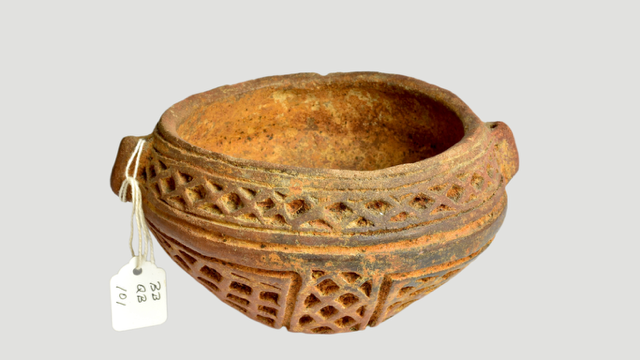The intricate and diverse art of pre-Columbian pottery is a testament to the ingenuity and creativity of ancient civilizations in the Americas. These artifacts, cherished by historians and art enthusiasts, reflect the rich cultural tapestry of societies that thrived long before European contact. From their utilitarian functions to ceremonial and decorative purposes, pre-Columbian pottery showcases the technical expertise and artistic prowess that defined these cultures. To fully appreciate these masterpieces, one must explore their history, styles, and significance in modern times, often highlighted in a renowned pre-Columbian art gallery.
The Importance of Pre-Columbian Pottery
Pre-Columbian pottery is more than just functional ware; it’s a window into ancient people’s lives, beliefs, and social structures. These artifacts were made by civilizations spread across Mesoamerica, South America, and Central America, each imparting unique methods and stylistic elements. The art forms convey stories through their designs and iconography, offering insights into religion, mythology, and daily life. Today, these pieces are highly valued in collections and exhibitions, where art galleries showcase them as significant relics of human history.
Styles and Techniques Across Regions
Mesoamerican Pottery
Mesoamerican pottery, spanning the Maya, Aztec, and Zapotec cultures, is distinguished by its vibrant colors, intricate patterns, and symbolic motifs. The Maya, known for their extraordinary attention to detail, often depicted mythological scenes on their vessels, employing advanced techniques such as slip painting and burnishing. The Aztecs, on the other hand, favored pottery that served ritualistic functions, incorporating symbols of gods and nature.
Various forms, including large urns, ceremonial plates, and figurines, characterize the artistry of Mesoamerican pottery. The presence of intricate glyphs and deities’ representations highlights these items’ cultural importance. In many pre-Columbian art galleries, Mesoamerican pottery draws attention for its storytelling ability and complex craftsmanship.
South American Pottery
While Mesoamerican pottery is remarkable, the South American civilizations brought their innovative approaches to pottery-making. The Moche of Peru are particularly famous for their realistic portrait vessels, which depict human faces, animals, and scenes of daily life with astonishing detail. These artifacts offer a glimpse into the social hierarchy and rituals that shaped Moche culture.
The Nazca, known for its polychrome pottery, used a variety of natural pigments to create vibrant geometric patterns and depictions of mythical beings. Inca pottery, while more utilitarian, showcased refined shapes and symmetrical designs, often adorned with representations of llamas and agricultural themes. The diversity of South American pottery, much like its Mesoamerican counterpart, embodies the sophistication of its creators.
Production and Craftsmanship
Pre-Columbian artisans employed numerous highly advanced techniques. Pottery was often hand-built using coiling or slab-building methods before finishing with meticulous painting and firing techniques. Clay was sourced locally, and the choice of clay usually influenced the final appearance and texture of the pottery. Pigments derived from minerals and plants were applied to add color and detail.
In many instances, pottery served utilitarian purposes and played a significant role in ceremonies and burials. For example, some pieces were used to hold offerings, while others acted as funerary objects meant to accompany the deceased into the afterlife. The intricate nature of these works is a testament to the skilled artisans who passed down their techniques through generations, embedding cultural values and stories in every piece.
The Modern Appreciation of Pre-Columbian Pottery
Today, collectors and scholars continue to study and celebrate pre-Columbian artifacts for their historical and artistic significance. These artifacts are highly sought after and are often displayed in pre-Columbian art galleries and museums worldwide. The allure of these ancient works lies in their ability to connect us with the past and illustrate the complex societies that once flourished in the Americas.
Ethical considerations are vital in the collection and display of pre-Columbian pottery. Museums and galleries aim to ensure that these artifacts are sourced responsibly, respecting the cultural heritage of their originations. This awareness helps preserve the integrity and history of these remarkable artifacts for future generations.
Final Thoughts
Pre-Columbian pottery, whether from the bustling cities of the Maya or the arid coasts of Peru, embodies its makers’ skill and spiritual depth. Each piece tells a unique story, reflecting the values, beliefs, and artistic sophistication of the culture that produced it. Collectors, historians, and art enthusiasts can find inspiration and awe in these timeless artifacts, which continue to bridge the past and present in profound ways. For those interested in exploring this world, visiting a reputable pre-Columbian art gallery offers a window into the rich history of these ancient creations.
Whether admired for their aesthetic beauty or historical importance, pre-Columbian pottery and artifacts remind us of the creativity and resilience of the human spirit throughout history.
Laila Azzahra is a professional writer and blogger that loves to write about technology, business, entertainment, science, and health.
